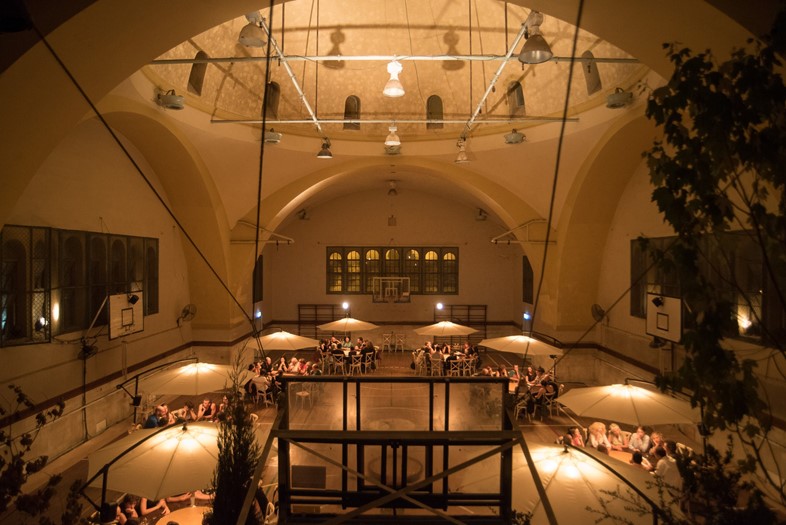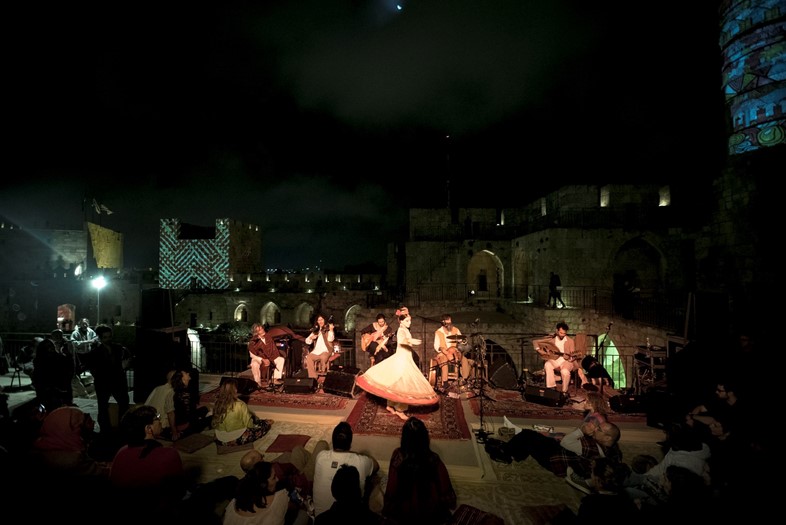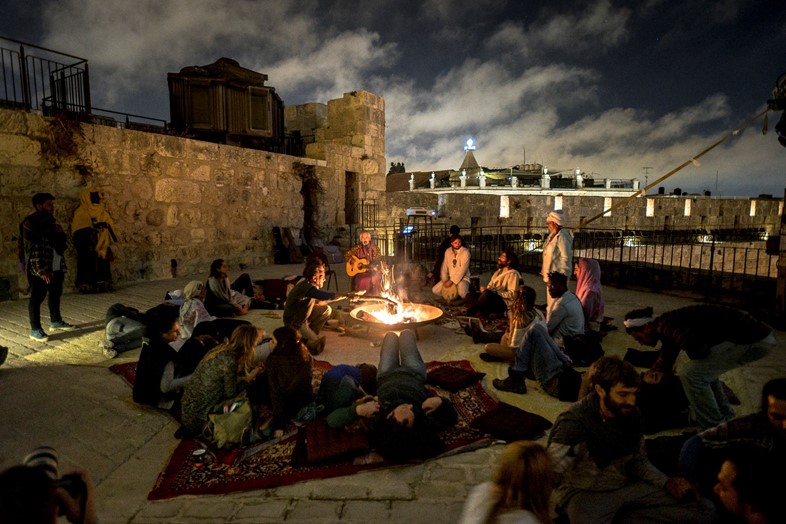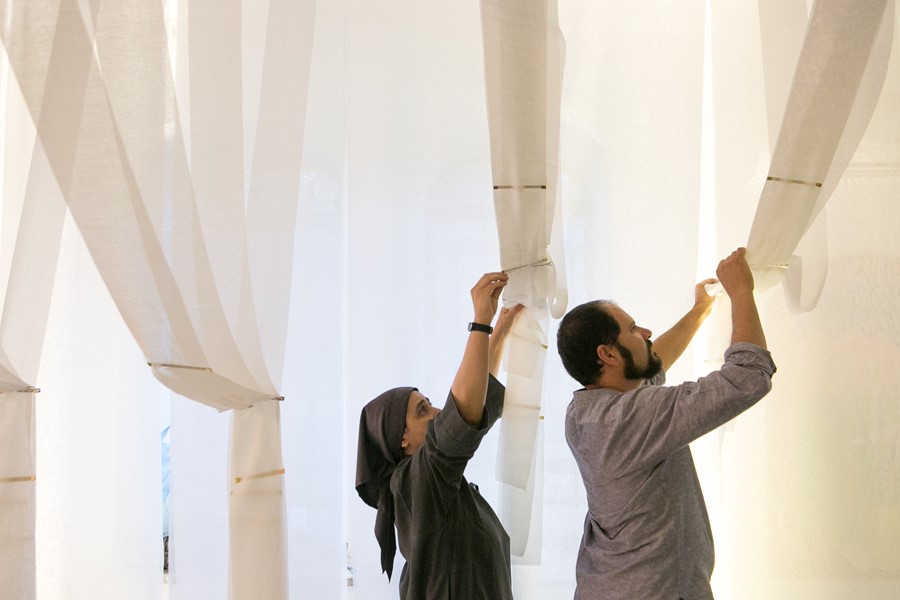How can a coming-together of people overcome centuries of unrest? Suze Olbrich visited Jerusalem's multi-disciplinary arts festival for a week of awe-inspiring cultural enlightenment to investigate
Driving towards Jerusalem from Tel Aviv, the captivating, liberal-minded city I’d just fallen hard for, friends’ comments looped: “Jerusalem is intense”. “Jerusalem should be experienced once, but it’s too much…” Not being religious, I hadn’t long pondered its unique significance to millions of worshippers. And I couldn’t get snatches of religious and historical texts, travel photography and news footage to coalesce into anything approaching a solid picture.
I was on my way to attend the final week of Mekudeshet, the Jerusalem Season of Culture (JSoC)’s Sacred festival, a multidisciplinary programme of events exploring what “sacredness” can mean. My driver, a politically exiled Persian, points out manifold separation walls as we pass along and across them. I keep checking the digital map, trying to orientate myself amid the dashes and dots of long-contested boundaries. Stepping out of the car, a distinct thrill descends as calls to prayer and church bells undulate over the low hum of traffic. From the hotel terrace, at dusk, I gape beyond hills into Palestine.
Speaking to the festival’s organiser, Naomi Fortis, I learn JSoC is funded by the philanthropic Schusterman Family Foundation, private donors and ticket sales. The city municipality offers strategic support alone; the ministry of culture is not involved. And so, they are free to pursue their goals: to counter divisive voices via the arts, to tell the stories exuding from Jerusalem’s individuals, communities and buildings; to investigate and pay homage to concepts of sacredness, and to attempt to recalibrate reality through interdisciplinary endeavours such as place-making at Zion Square, formerly the site of vile disagreements, now a social hub following the introduction of a moveable forest by an urban healer’s art collective.

The first music I catch is Cairo-Jerusalem, a concert in celebration of classical Arabic song led by Moroccan-Iraqi, Haredi* Jew, Ziv Yehezkel, featuring Nasreen Qadri, a rising Muslim Arab-Israeli pop star. The show begins with Qadri at the microphone, her dusk-flecked vocals induce a visceral reaction. Yehezekel soon follows, his dynamic voice only marginally less charged. Laments alternate with love songs: mesmeric.
Later, Baaba Mal performs at the Tower of David, a standalone citadel. Simply entering the beautifully lit ancient castle and winding down stone paths past open excavations is mind-blowing. In between songs from his latest record, Traveller, Mal speaks of how much harder travelling is becoming as walls multiply; of the power of hope. I think how it might sound profound elsewhere but here renders it pallid (although I’m sure he means it). Then I quash cynicism and dance, watching mini-kippahs bob alongside topknots and dreadlocks.
The week’s musical highlight, Mulatu Astatke, commands the same stage the following night. Decades ago, the feted Ethiopian followed his heroes to New York and played with the likes of Duke Ellington, before returning home to craft his own take on the art-form. Global attention came after Jim Jarmusch sampled his recordings on the Broken Flowers soundtrack and his fanbase has swelled ever since. The stage lights are less bombastic; the crowd more diverse; the vibe freer, and the music profound and danceable.

On the International Day of Peace, I sit in on debrief of a seminal event that took place during opening week: Amen, a communal House of Prayer, hosted by a representative from a different faith each day – a borderline miracle. All participating leaders are in attendance: Rabba Tamar Elad-Abblebaum, Muslim Sufi Sheikh Ihab Balah; two further Rabbis, a Catholic priest, a Franciscan monk and a Coptic deaconess; a Palestinian Imam and a woman Muslim community leader who works with battered women. All share their reasons for participating in a project with such potential to wreak havoc and reveal how friendship, common cause and trust were forged over months of planning, and that, crucially, their communities followed them to Amen. Intractable though the situation is, hope stirs.
Another JSoc creation, the Seven Ways to Dissolve Boundaries tour, focuses on civic unity. Following the anguish of the 2014 Gaza War, JSoc realised purely cultural ventures were no longer enough. And so they hosted dinners for people of differing ethnicities, religions and professions, building a contact book of exceptional citizens, some of whom feature on the tours. Our route follows the light rail system into East Jerusalem, where relative poverty is evident, and back again. Along the way we encounter the curators of the Museum on the Seam, a sociopolitical contemporary art space that raises controversial issues to elicit conversation, and drop by an architects’ practice to learn how they work with the city’s idiosyncrasies.
On a different occasion, we meet with JSoc’s Palestinian community liaison, Riman Barakat, at the first Palestinian-run library in East Jerusalem. Over coffee, she describes the burgeoning alternative cultural scene in Ramallah and Bethlehem, and explains that Palestinian youths, stifled by the politicised artistic output of their elders, are creating alternative means of expression. We stop by JEST, the hub of a Palestinian NGO that serves as an incubator for young entrepreneurs, mostly women, in this area of supremely high unemployment.

Barakat then takes us to Al-Ma’mal, a contemporary gallery in the Old City. As well as showing works by Palestinian talents and offering residencies to diasporan artists such as Mona Hatoum, Al-Mam’al also offers space to creative locals, and reaches out to the community with educational opportunities. What the gallery foundation has created with limited resources is deeply impressive. The photographic exhibit I peruse, Erasures by Faisal Sheikh, explores the legacy of the 1948 Arab-Israel War: “in effect, the dissolution of Palestinian society… a wound that has never healed,” (artist text), is duly gut-punch powerful.
On the last night, vibrant Machne Yuda market provides a top dinner – I could write double this amount purely on Israeli food, but this is not that place – and ample entertainment via the crowds Shabbat-shopping. Having dropped by a dive bar (turns out this city does party) I head to the Tower of David for the finale: Night Stroll. From midnight to 5am, a series of musicians plays on stages, along walkways, atop walls and in nooks. One, is Liraz, an Iranian singer and actress who meshes 60s and 70s music, forbidden following the Revolution, with electronic beats. The entire space is open to wanderers so I climb The Tower of Phasael (built by Herod), to get an overview and sit spellbound by the sight just below: Israeli dancer, Daniell Alnuma, swirling to the gypsy and jazz soundtrack supplied by the Zaman Quartet and Iraqi oud player and singer, Mohamed Alnuma. Behind them, I can see the entire city. And, yes, it is intense – but oh so definitely worth revisiting.
